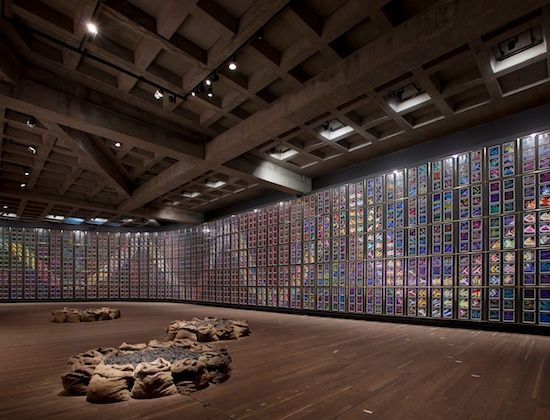

Snake, 1970-1972
Sidney Nolan, Snake, 1970-1972 Ink, dye, and wax crayon on card, 9.14 m × 45.72 m (30.0 ft × 150.0 ft), Museum of Old and New Art, Hobart, Tasmania, Australia
David Walsh is an Australian businessman. He is the owner of the Museum of Old and New Art (MONA)
"If Sidney Nolan were still alive and working, his new work would be worth nothing. I say that because, essentially, the earlier in his career a piece comes from, the more valuable it is. Since I own some later work, that annoys me.
So it's self-serving for me to contend that some of his best work came later, but I've got 500 words to say just that.
There are 1,620 panels in Snake, and I've looked at all of them, I suspect. I see some of them every day, through the floor of my apartment, because it, like the entire museum, was constructed in the thrall of Snake. Without Snake, Mona wouldn't have legs.
And after all that examination, let me tell you what I think Snake (and its companion pieces, Paradise Garden, Shark and a few smaller large works) is. But first, a digression. Musicians can only play well when they don't have to think about what they play. That's called muscle memory (or motor learning). When sportspersons, say tennis players, are trained to play at the top level, they are drilled into responding to situations automatically. They can overlay some strategy on their performance, but that happens only as a direction - serve to the backhand, move forward - not as a decision process for an individual shot.
Nolan developed a gestural language for Snake in the same way that most artists work. He composed and executed a little picture, influenced, as we all know, by aboriginals and their art, and New Guineans, and their snake dances. He then painted similar scenes with a quicker hand and fewer gestures, and he repeated this thousands of times, till the paintings were made by muscle memory. As his gestures implied an as yet unseen image, he directed his work like a tennis player - but the paintings came automatically.
In my opinion, the endpoint of this process is the remarkable bats, each made with a few strokes, but embodying batness.
For Snake and Shark Nolan made a mock-up of the larger picture and filled in the details, so he may not have set out to become an automatic painter. But he used what emerged, a fortuitous accident, to drive him further. That's how great creatives create - not by standing on the shoulders of giants, but by extracting nuance from happenstance. Nolan has harnessed serendipity, to our great good fortune."